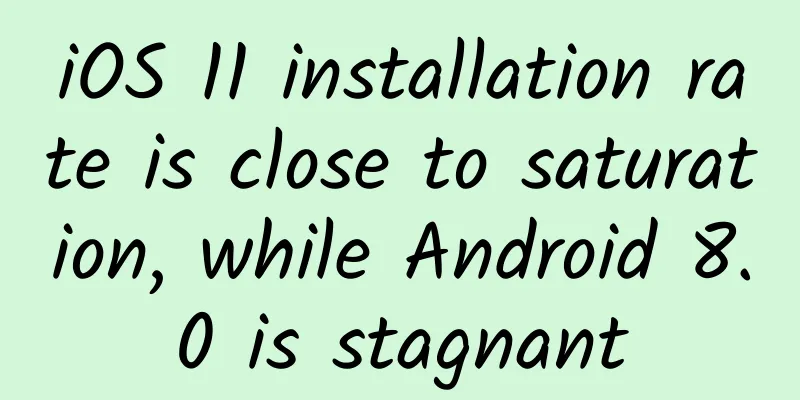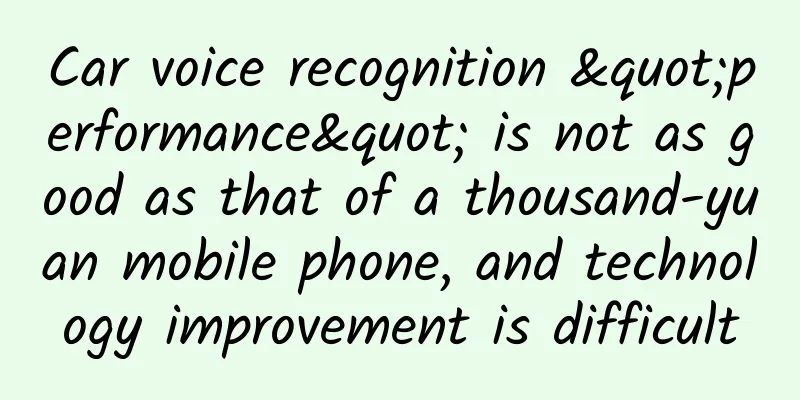iOS 11 installation rate is close to saturation, while Android 8.0 is stagnant

|
Recently, Apple released the latest iOS installation rate statistics on its developer website, showing that 65% of devices are running iOS 11, a 28% increase from the beginning of this year. In contrast, the adoption rate of Android 8.0 is only 4.6% so far, and this system has been online for more than 8 months.
Apple regularly publishes official statistics on iOS adoption rates on its developer website. Because these data are collected from App Store tracking information, they are much more accurate than data from third-party agencies. In terms of specific data, 65% of all iPhones, iPads, and iPod Touches use iOS 11, 28% use iOS 10, and the proportion of earlier iOS systems has dropped to 7%. In comparison, the three figures in the previous month were 59%, 33%, and 8%, respectively. We can also look at another data. Among all devices that can be upgraded to iOS 11 (see the list of compatible devices below), 19% are still on iOS 10, 76% are equipped with iOS 11, and the remaining 5% are running on earlier systems. This is the potential user group for the continued growth of iOS 11's share. Apple said that the installation rate of iOS 11 has slowed down slightly compared with the data of previous months. Since January, the average monthly increase of iOS 11 adoption has been less than 4%, while before that, the monthly growth rate was around 6% to 7%. Compared with the same period in April last year, the installation rate of iOS 10 on available devices was 79%, higher than iOS 11's 76%. At the same time, we can also look at the unfortunate Android. Currently, only 4.6% of devices are running Android "Oreo", of which 4.1% are running version 8.0 and only 0.5% are running version 8.1. According to the author's understanding, the devices running Android 8.1 are basically new models released in recent months, and the number of old models upgraded to Android 8.1 is almost zero. Now the vast majority of Android devices are still running on version 7.x, Nougat 6.0 Marshmallow and 5.x Lollipop. In fact, everyone knows the reason why the new Android system is pushed slowly. Although the UI designed by OEM manufacturers has its own characteristics, it takes a long time to adapt after the new version of Android is released, which leads to the fragmentation of Android. In addition, many media have recently revealed that many Android manufacturers not only delay the system version, but also delay important security patches for several months. Obviously, there are still many problems that Android needs to solve. |
<<: Method and code implementation for detecting Android virtual machine
>>: Siri is the dumber of the four major voice assistants. She can only tell jokes for many years.
Recommend
If you’ve climbed a mountain, how can you not understand machine learning?
In today's booming artificial intelligence, i...
Night Grass and Chollima 7-day Case Study Practice Training Camp 17th
Resource introduction of the 17th issue of the Ni...
Can a "hole" melt an iceberg?
In 2014, American baseball player Pete Frates ini...
Want to find someone with the same birthday as you? It’s not that difficult!
When you hear someone has the same birthday as yo...
Don’t know how to write a plan? You may not understand these 4 points!
I often encounter many people complaining that th...
How to set the budget for a single promotion plan in Baidu promotion account?
(1). After entering the promotion management page...
Uninvited Guests: Alien Molecules in the Orbit of Near-Earth Asteroids
We know that in addition to the eight planets, th...
Ferrari sold a total of 13,663 new cars in 2023, an increase of 3% over 2022
Recently, according to media reports, in 2023, Fe...
Can you drive a shared bike without a business license? What are the requirements for opening a shared bike service?
This article mainly introduces whether you can dr...
Variety Witch Astrology Standard Course 2019
Variety Witch Astrology Standard Course 2019 Intr...
How to operate a WeChat public account? Any operating skills?
With the development of Internet marketing and pr...
How can brands achieve growth in 2020?
Let’s first think about the following questions: ...
Subvert your cognition! Woodpeckers don't wear "safety helmets" when they hit trees
It's often thought that the spongy bones in w...
February 2019 Marketing Calendar is here!
The so-called pendulum theory, It is said that ma...
Analysis of selling products through Douyin and short videos!
"Is it too late for me to do live streaming ...









